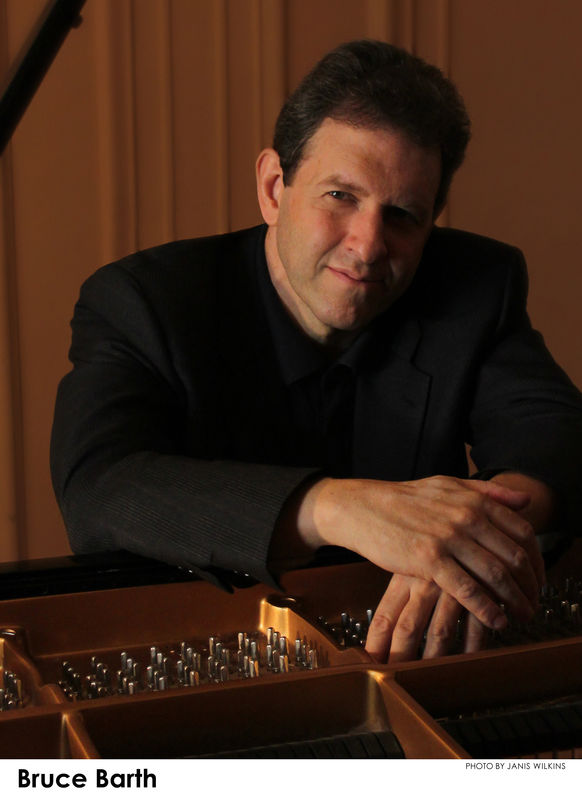Almost Like The First – Bruce Barth
This medium-up song has an open-ended sound, with no key center. The bass doubles some of the melody. The solo form alternates between a 4-feel and looser, "broken time."
- Recording: Vincent Herring - American Experience
- Recorded on: October 12, 1989
- Label: Music Masters (5037-2-C)
- Concert Key: No key center
- Vocal Range: , to
- Style: Swing (medium up)
- Trumpet - Dave Douglas
- Alto Sax - Vincent Herring
- Piano - Bruce Barth
- Bass - James Genus
- Drums - Mark Johnson
Video
- Description
- Historical Notes
- Solos
- Piano Corner
- Bass Corner
- Drum Corner
- Guitar Corner
- Inside & Beyond
- Minus You
The changes have a mix of tonal and more open-ended qualities, with much stepwise motion. The third to fifth measures use a distinctive chord quality: a minor 7th with a sharp 5th, which is similar to a first-inversion major triad (for example, Cm7♯5 contains A♭ major).
Solos are on a similar form to the head, but with slightly different B and C sections. The last four measures of the B section (E in the solos) are a static Amaj7, while the C section (F) is extended to 22 measures with the last eight all on Dm7. A loose 1-feel or "broken time" is played for most of the solo chorus, going to a 4-feel for the first 10 measures of the B and C sections.
In this quintet arrangement, the horns play in unison at the beginning, harmonizing on the rhythmic hits. The alto sax has the B and C section melodies with the bass, with the trumpet entering in the ninth measure of these sections. The horn voicings cross on the last melodic phrase. First and second parts are available for this arrangement, along with a bass part and a Condensed Score.
Related Songs
Email Send Almost Like The First to a friend

Bruce Barth
born on September 7, 1958
A post-bop pianist with a delicate, elegant touch, Bruce Barth has made a name for himself in the New York scene through his work both in ensembles and as a soloist. Bruce was born into a musical family and began classical piano lessons at age five. He received his first jazz record as a present from his older brother at age 15 and fell in love with the genre. Bruce taught himself to play jazz piano by ear, imitating his favorite pianists and horn players, then later studied more formally under Norman Simmons and Neil Waltzer. He eventually enrolled at the New England Conservatory where he studied with Jaki Byard, Fred Hersch, and George Russell; Bruce's first professional recording was with George Russell for Blue Note Records. Read more...

